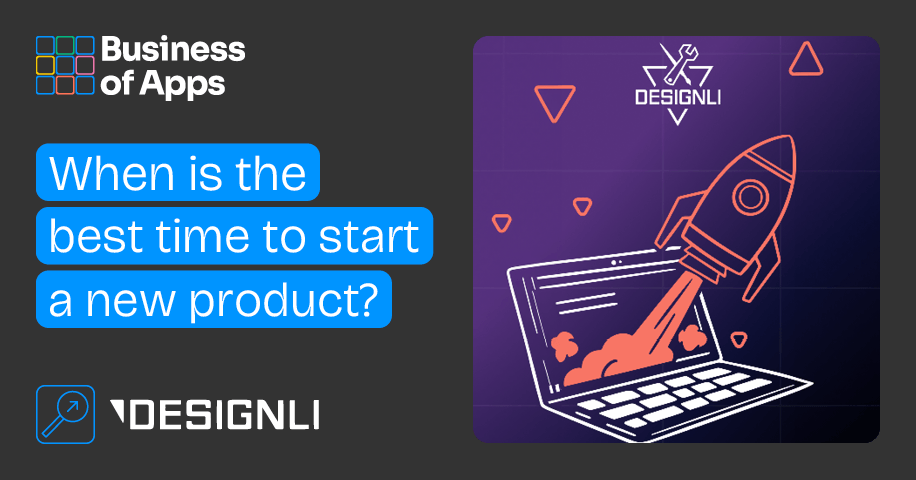Creating a new product is a milestone for any business, and determining the right timing for launch can impact its long-term success. This guide will help you define the optimal strategy for introducing your product to the market.
Key factors to consider
Understand your business model
Identifying your business model helps you define the product value proposition and delivery. Is your product B2B (business-to-business) or B2C (business-to-consumer) oriented? Timing strategies differ based on your model. For instance, B2B products may benefit from aligning with important industry events, while launching B2C products might perform better around holidays or special shopping seasons.
Define your goals
Outlining your objectives is key to defining a product strategy. Are you aiming to increase brand awareness, create buzz, or drive sales? If your goal is to maximize revenue, consider launching during peak shopping seasons, which might be the best approach.
Conduct market research
Analyze trends and consumer behavior to identify market gaps and opportunities for your product. Marketing tools like SWOT analysis (strengths, weaknesses, opportunities, threats) can provide valuable insights to understand your potential audience.
Identify your target market
Understanding your potential audience is key to understanding your product-market fit. Do you know your potential customers’ interests, preferences and needs? Having insights from your target market will allow you to tailor your launch plan and engage them effectively.
Create a strong value proposition
To differentiate from your competitors, your product must meet customer needs. Develop a strong value proposition highlighting your product’s unique benefits/offer by explaining how it solves a problem or meets a need better than existing solutions.
Develop and launch marketing campaigns
Create a marketing plan that integrates both online and offline strategies. Use social media, email marketing, and traditional advertising to generate hype. Organizing your marketing efforts to align with your product launch is key to maximizing impact.
Measure and adjust
Once your product is launched, monitor its performance. Collect data by using analytics tools to evaluate the effectiveness of your marketing campaigns and gather customer feedback. Adjust your strategy based on the insights you gather to optimize results.
How to determine the right timing
Consider the following steps to determine the right timing for your product launch:
- Align with business goals: Ensure the timing supports your business objectives.
- Leverage market research: Use insights from your research to identify optimal launch windows.
- Participate in industry events: Align your launch with relevant industry events or trade shows.
- Test and iterate: Start with a soft launch to gather feedback and refine your approach before the full launch.
Launching a new product is not an exact science, but by considering these factors and planning strategically, you can choose the best time to launch and maximize your product’s chances of success.
The best time to launch a digital product
Time to market is key to making your digital product successful, but it’s important to consider the following points:
Product testing
Before launching, ensure your product has been tested in different scenarios to avoid technical issues and minimize negative feedback. Online reputations can be damaged quickly, so it’s important to launch a polished product while remaining open to user feedback.
Market trends and technical advancements
Consider digital trends, such as the rise of new technologies and changes in consumer behavior, which can influence your launch timing. Regulatory shifts, like new data protection laws, can also play a key role. Developing an MVP can smooth your path to software success.
By validating your ideas, prioritizing core features, gathering feedback, and embracing an iterative approach, you can create a user-centric product that captures the attention of your target market. Remember, an MVP isn’t the end goal; it’s a great way to launch your product successfully.
Avoid competitors’ launches
Adjust your timing to avoid being overshadowed if a direct competitor is preparing to launch a similar product. Consider launching your product ahead of theirs to capture market attention.
Building an online presence before launch
Establishing a strong online presence before launch is important to build anticipation and create a positive brand image. Here are some steps to improve your digital visibility ahead of launch:
Create a pre-launch landing page
Develop a dedicated launch landing page for your product before launch. Include teasers, product features, and calls to action to drive user engagement. Update the page with new information and collect email addresses to build a list of potential customers.
Integrated content marketing plan
Next, start creating social media content that addresses your audience’s pain points. This will help build your brand’s presence. Ensure the content is SEO-optimized to drive organic traffic.
Build a social media community
Generate hype about your product launch by sharing behind-the-scenes content and countdowns on social media. Write attractive copies, include hashtags and run polls/surveys to motivate users to share content and expand your reach. Participate in relevant community chats of your industry to engage with your audience.
Email marketing campaigns
Outline an email strategy to use all the data collected from your pre-launch landing page to run targeted email campaigns. Engage with your audience by offering beta access or early-bird deals.
Invest in SEO and paid ads
Improve brand visibility by investing in SEO efforts and paid ads. Optimize the website content with relevant keywords and run ads targeting potential customers with strong product offers in the lead-up to your launch.
Building an online presence and creating hype around your product launch can ensure a successful launch day and set the foundation for long-term customer engagement and growth.











